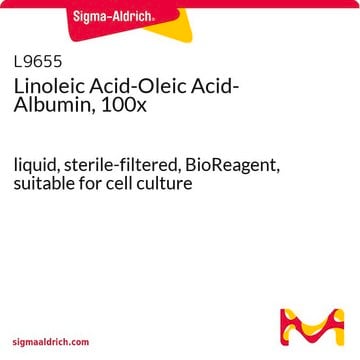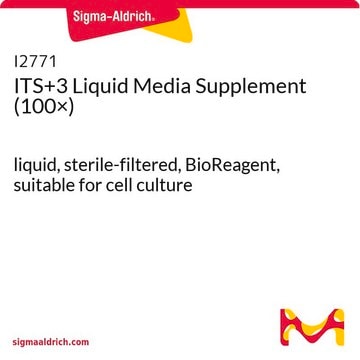L9530
Linoleic Acid-Albumin from bovine serum albumin
liquid, sterile-filtered, BioReagent, suitable for cell culture
Synonym(s):
Linoleic Acid-Albumin from BSA
About This Item
Recommended Products
description
Contains 2 moles linoleic acid per mole BSA
sterility
sterile-filtered
product line
BioReagent
form
liquid
concentration
100 mg/mL BSA in DPBS
90-120 mg/mL protein (biuret)
technique(s)
cell culture | mammalian: suitable
impurities
≤400 EU/mL endotoxin
storage temp.
2-8°C
Related Categories
General description
Application
Other Notes
Storage Class Code
10 - Combustible liquids
WGK
WGK 3
Flash Point(F)
Not applicable
Flash Point(C)
Not applicable
Personal Protective Equipment
Certificates of Analysis (COA)
Search for Certificates of Analysis (COA) by entering the products Lot/Batch Number. Lot and Batch Numbers can be found on a product’s label following the words ‘Lot’ or ‘Batch’.
Already Own This Product?
Find documentation for the products that you have recently purchased in the Document Library.
Customers Also Viewed
Articles
Importance and uses of linoleic acid in serum-free eukaryotic, including hybridoma and Chinese Hamster Ovary (CHO) cell, cultures
Our team of scientists has experience in all areas of research including Life Science, Material Science, Chemical Synthesis, Chromatography, Analytical and many others.
Contact Technical Service









